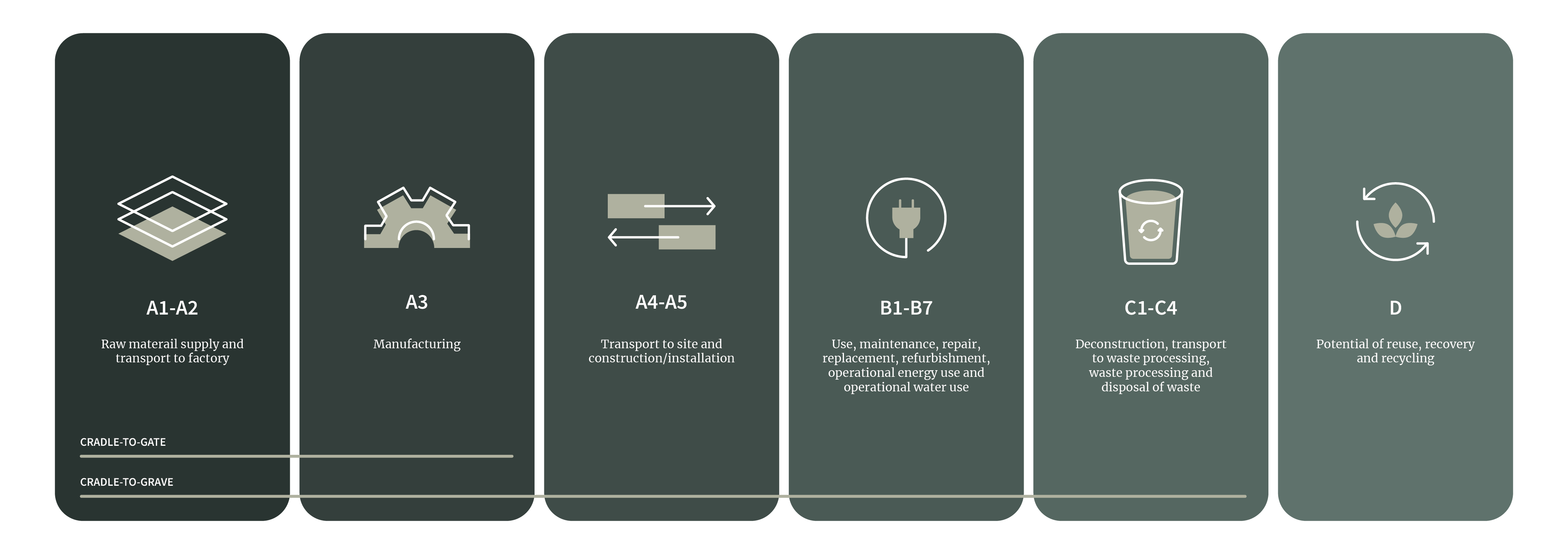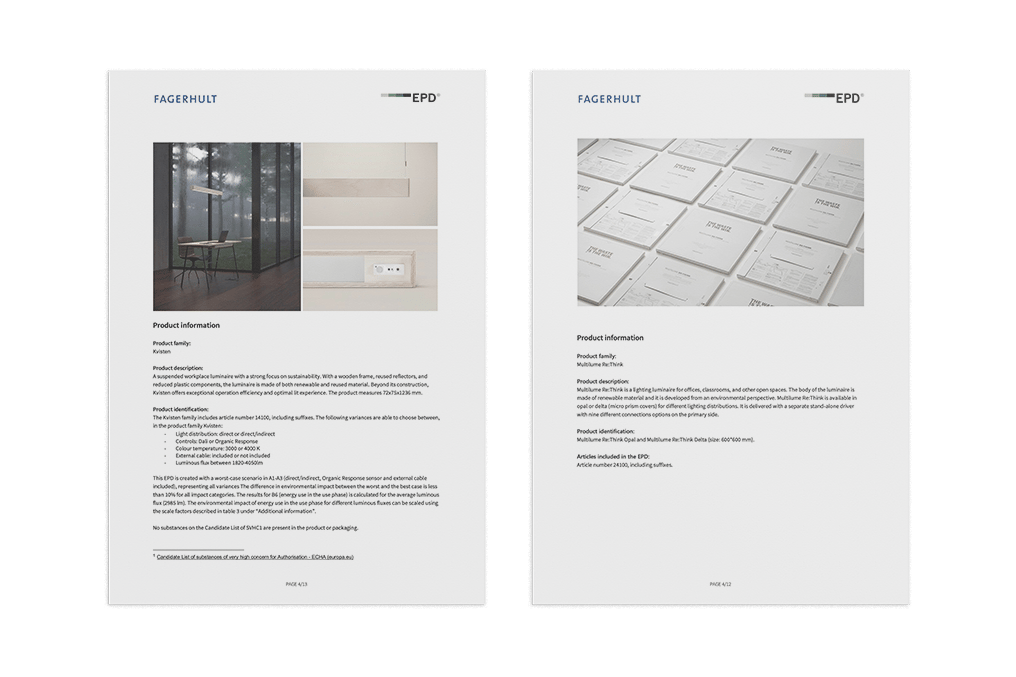Environmental Product Declaration
An environmental product declaration (EPD) is a standardized document that provides transparent, assured and comparable information about the environmental impact of a product during its life cycle.
Our goal is to help our customers make conscious choices by reporting the environmental impact of our products in EPDs.
The goal is a lower carbon footprint
To act wisely and develop in the right direction, it is necessary to have knowledge and clear goals. In our sustainability work, we carry out thorough life-cycle assessments (LCAs) to calculate our – and our products’ – environmental impact throughout their life cycle. The results serve as the basis for our ambitious goals and guide us in our work going forward. Each EPD we report is based on a detailed life-cycle assessment.

Transparency at every stage
A product with an EPD does not necessarily mean the product is sustainable or has a low environmental impact. The purpose of the EPD is to present environmental information about the product – knowledge and facts that can provide new insights to both manufacturers and customers. With the different modules (A1-C4), we gain valuable insights that enable us to focus on the areas that affect our footprint the most.
Our EPDs are prepared according to ISO 14025, which makes them comparable to other EPDs of equivalent products. All are audited by an independent third-party that ensures transparency in documenting environmental impact throughout a product’s life cycle. An EPD is usually valid for five years, unless there are major changes in production methods.


Comparing different EPDs
EPDs are prepared according to standardised forms, which means that all modules contain the same type of information. However, the collection of data used for the analysis may differ, and different manufacturers may use different assumptions and limitations. The assumptions made for each module are always described in the EPD. Assumptions are made from module A4 onwards, such as transport distances (based on sales history), the use of Swedish energy mix, for example, or service life (based on Lighting Europe).
We always include the driver
Without the driver, our products cannot function, which is why we always include it in our EPDs. The result can vary greatly when including or excluding the driver, but its inclusion is not required in the EPD standard.
Frequently asked questions
According to the EPD standard, it is possible to present several products in the same EPD, provided the difference in environmental impact does not exceed +50% to -50%. Products included in an EPD are always stated in the general information, along with the variation in GWP-fossil A1-A3. For example, our EPD for Pleiad G4 includes Pleiad G4 125, Pleiad G4 165, and Pleiad G4 205, which essentially only differ in size.
CO2e stands for carbon dioxide equivalents. This is an important factor for comparing the emissions of different greenhouse gases according to their potential for global warming. The GWP allows the gases to be converted into carbon dioxide equivalents. For example, methane contributes 28 times more to the greenhouse effect than carbon dioxide. A methane emission of 1 tonne is thus equivalent to 28 tonnes of carbon dioxide.
Environmental impact indicators are stated in scientific notation, i.e. numbers are presented in exponential notation with part of the number replaced with E+n, where E (which stands for Exponent) multiplies the previous number by 10 to the n:th exponent. This is to avoid many decimal places in a table. An indicator with a plus in front, e.g. +1.26E1, means a negative climate impact.
- The number 1.26E1 represents 12.6.
- The number 4.84E‐1 represents 0.484.
- The number 6.68E0 represents 6.68.
GWP stands for Global Warming Potential. In climate issues, GWP is often mentioned as a factor, expressed in CO2e, which means that all greenhouse gases have been converted to an equivalent amount of carbon dioxide (CO2). In the results table in the EPD, GWP-fossil is the factor that is most comparable between different products. GWP-total is the indicator that covers the entire life cycle of the product.
Cradle to Gate refers to the values from the first three stages in a product’s life cycle, A1-A3. It includes raw material extraction (A1), transport to factory (A2), and production (A3). This is the part of the life cycle that has the fewest assumptions, and is therefore easiest to look at when you compare between different products or suppliers. When comparing A1-A3 between different products, one should look at GWP-fossil.
Cradle to Grave means that all stages of a product’s life cycle are included, from raw material extraction (A1) to final waste management (C4). The further you look into a product’s life cycle, the more assumptions are made. For example, the use phase can be misleading depending on where in the world the product will be used, as different energy sources produce different results. When comparing A1-C4 between different products, one should look at GWP-total.
Where to find our EPDs
You will find the EPDs that are currently available under Downloads, via the product filter, or on the respective product pages.